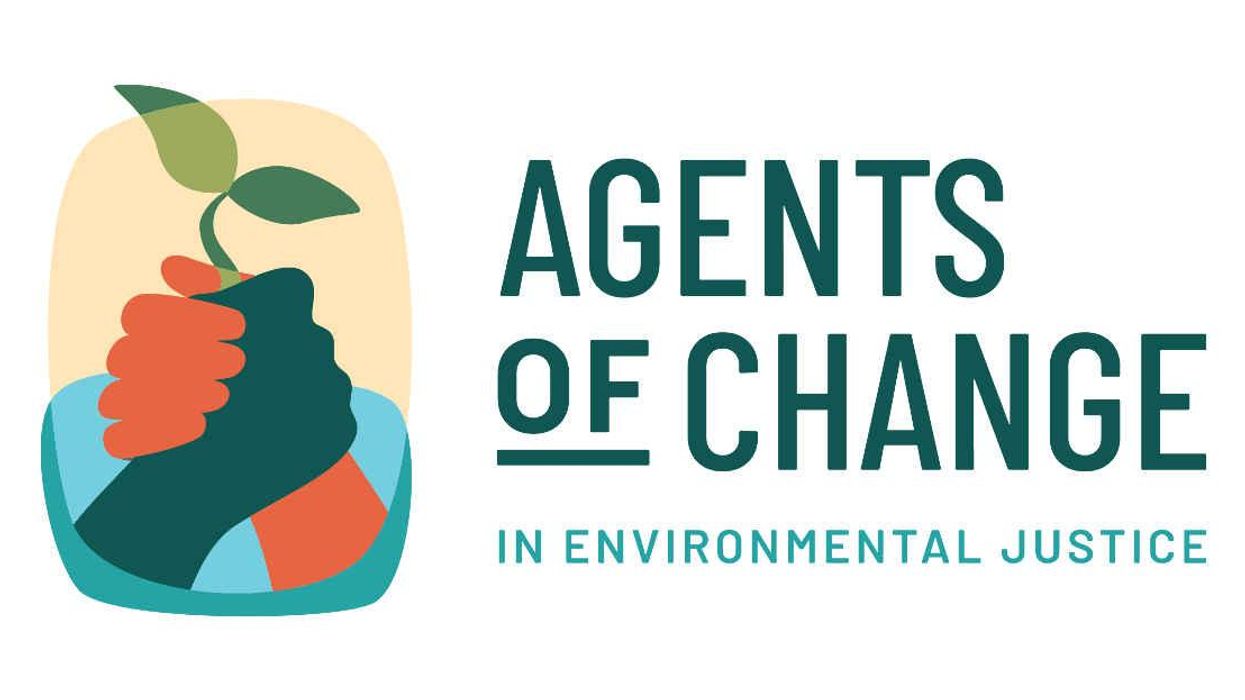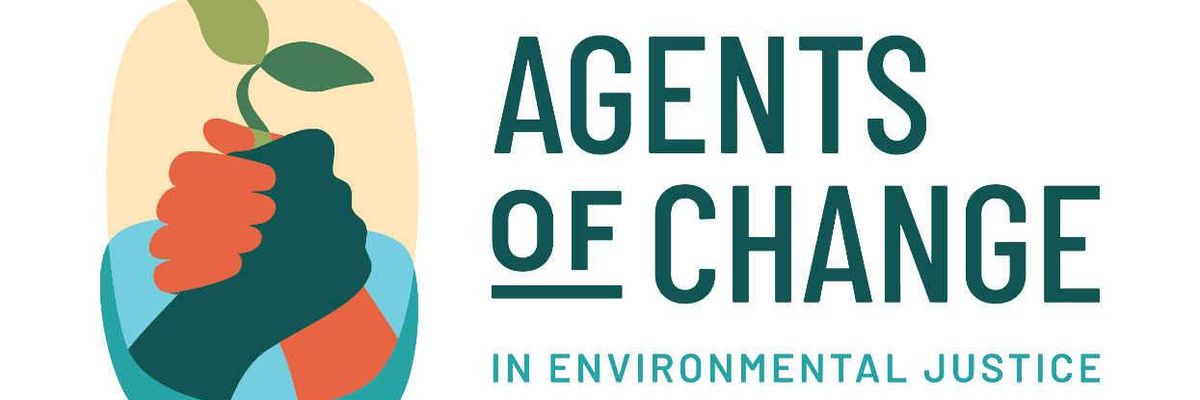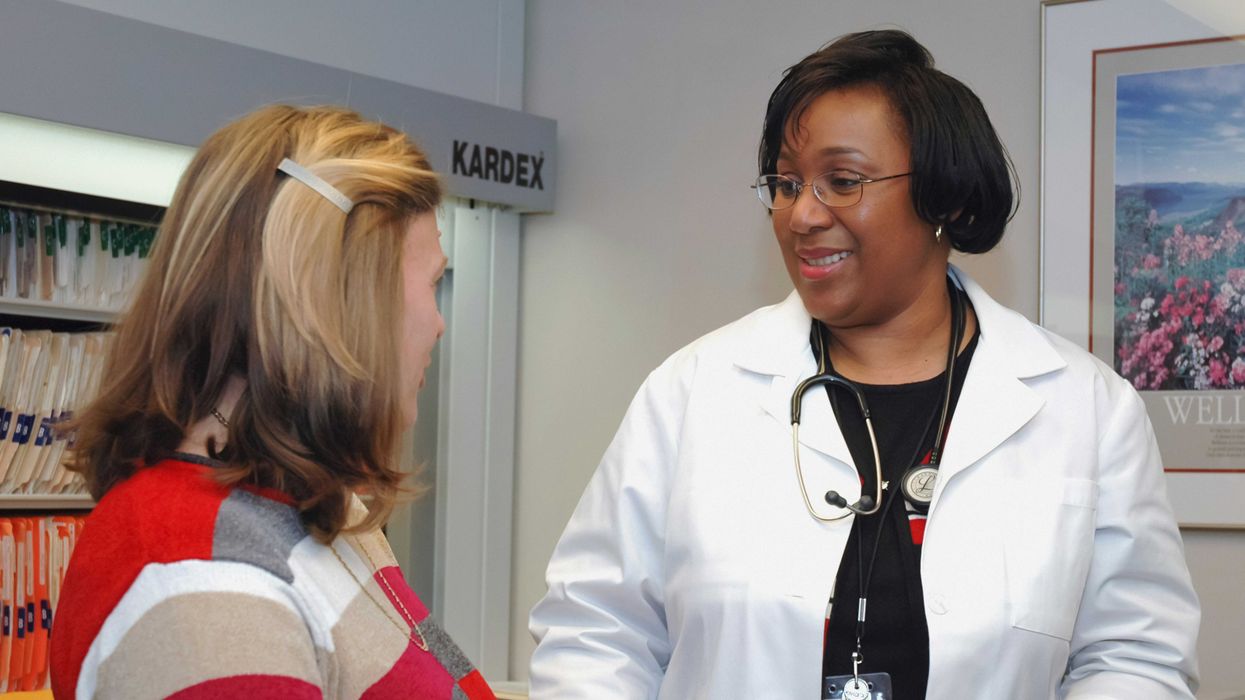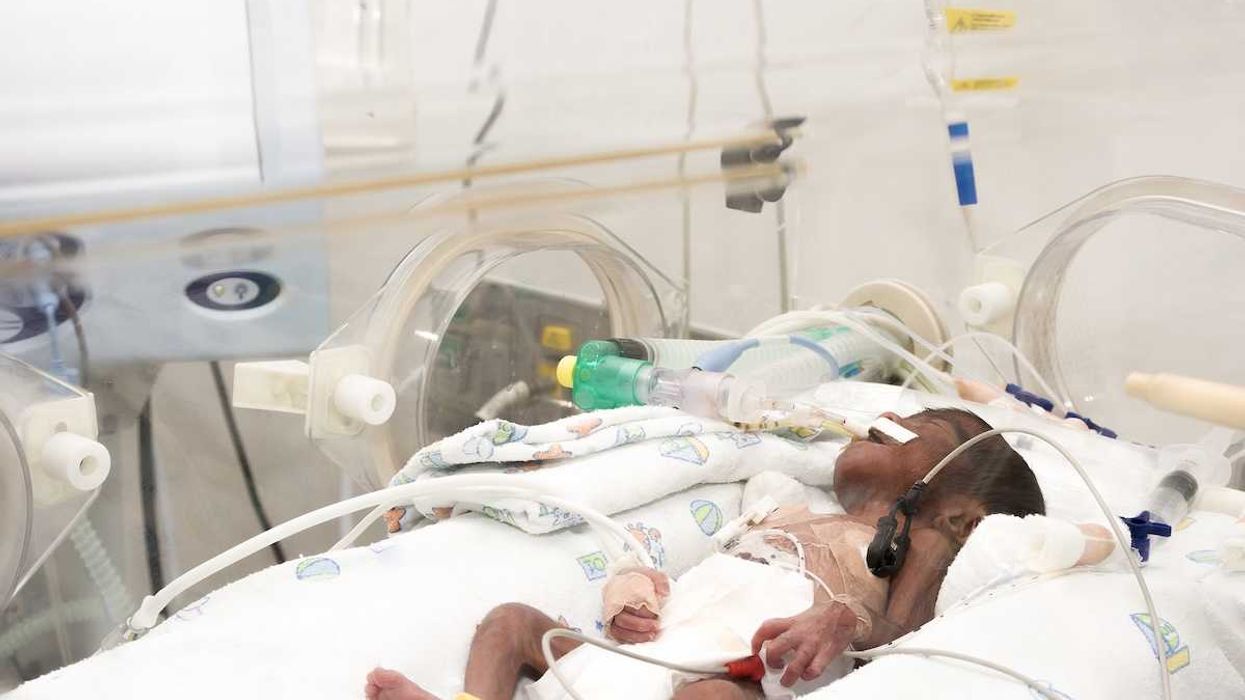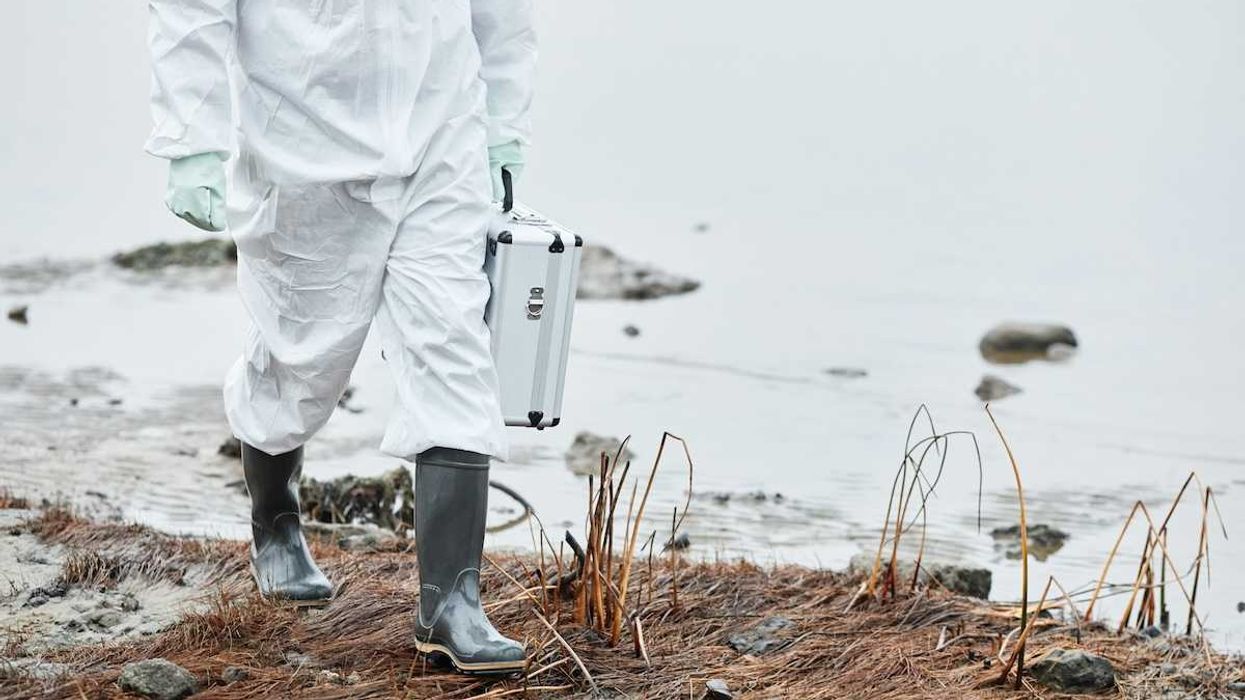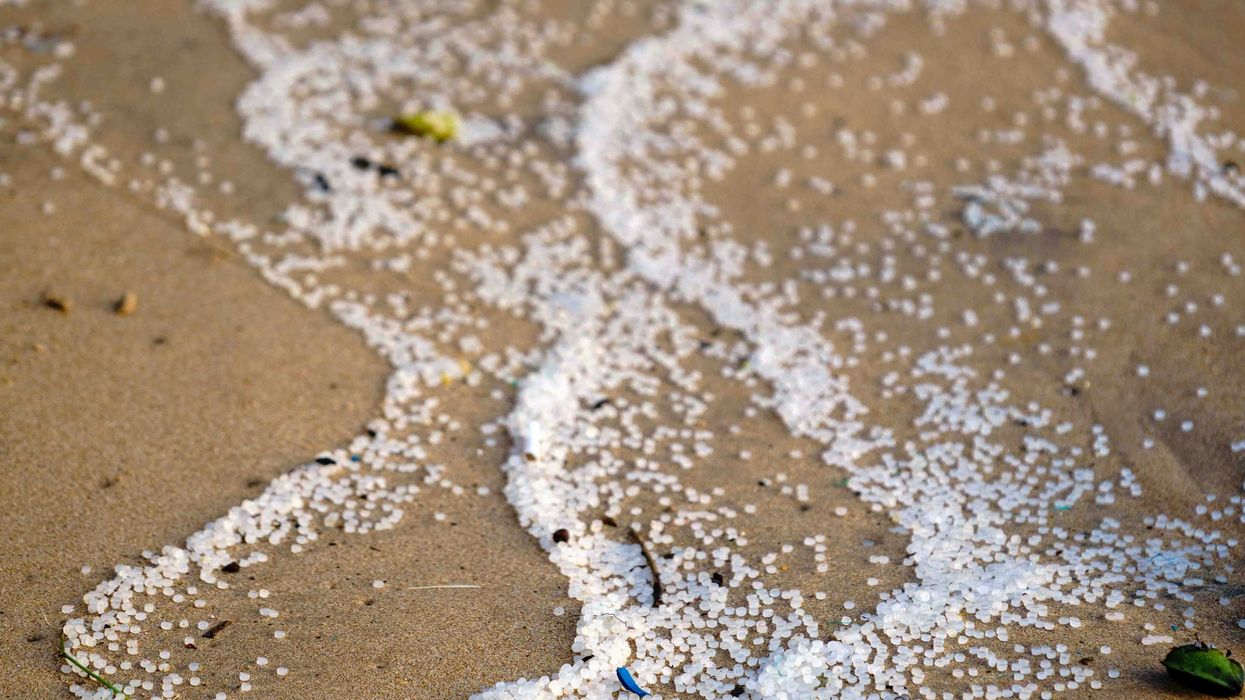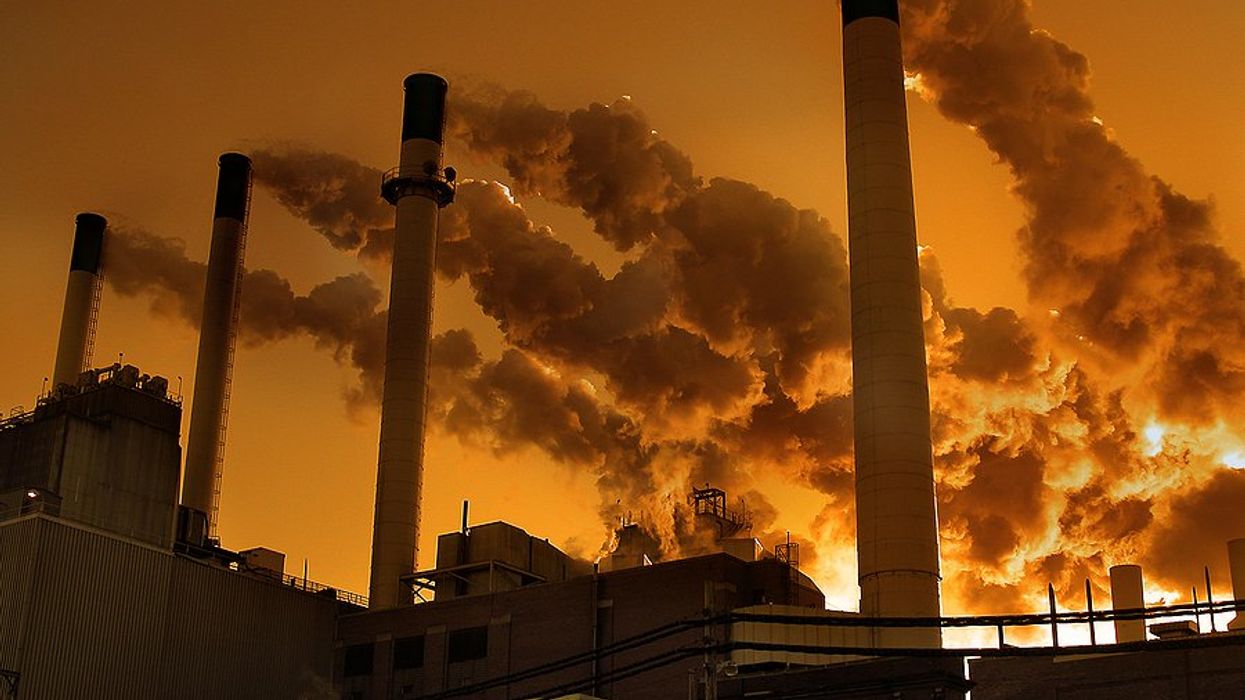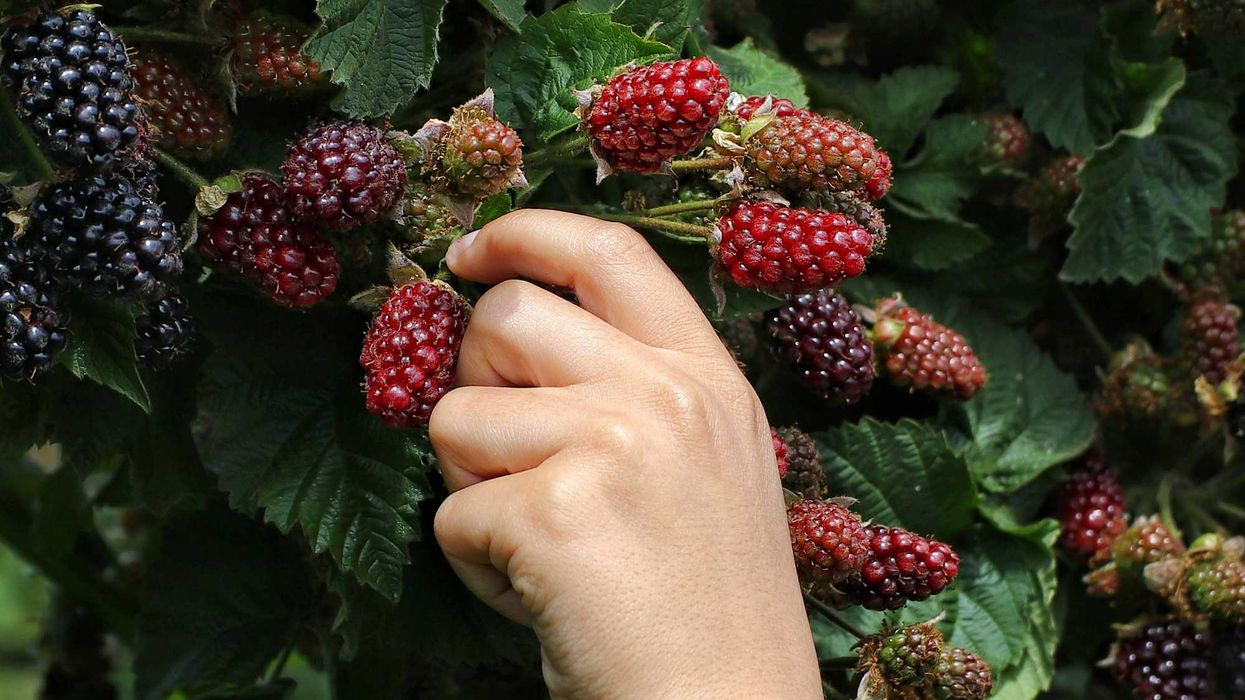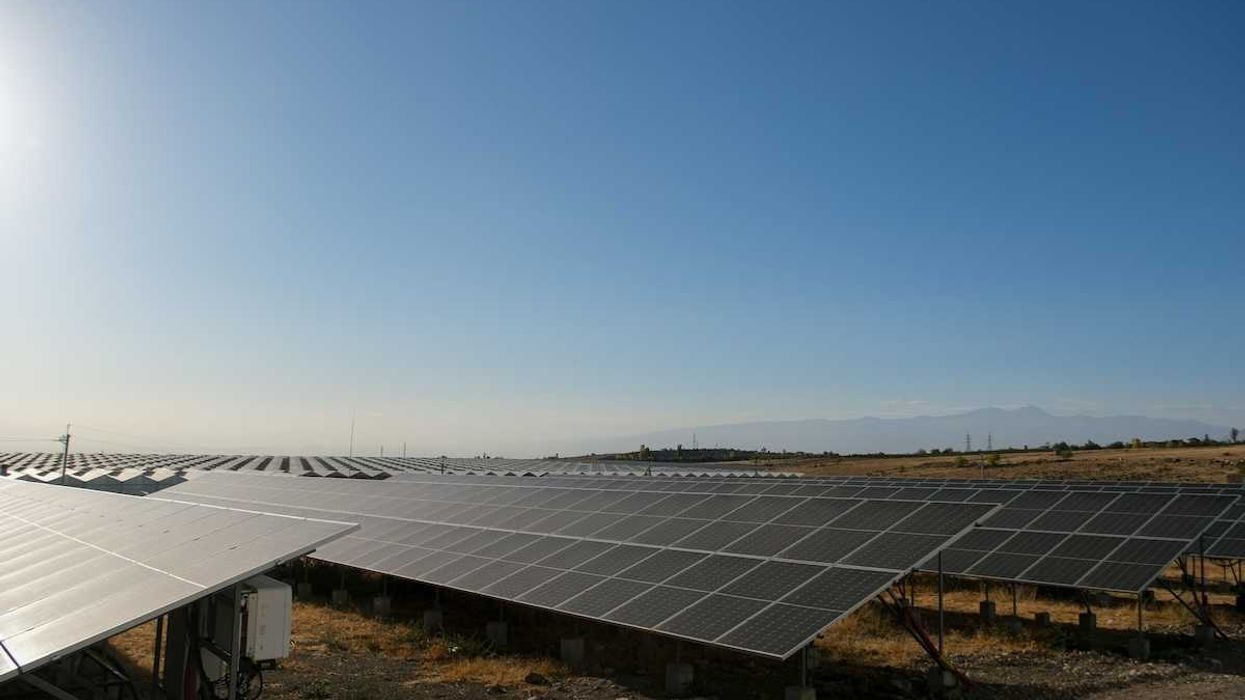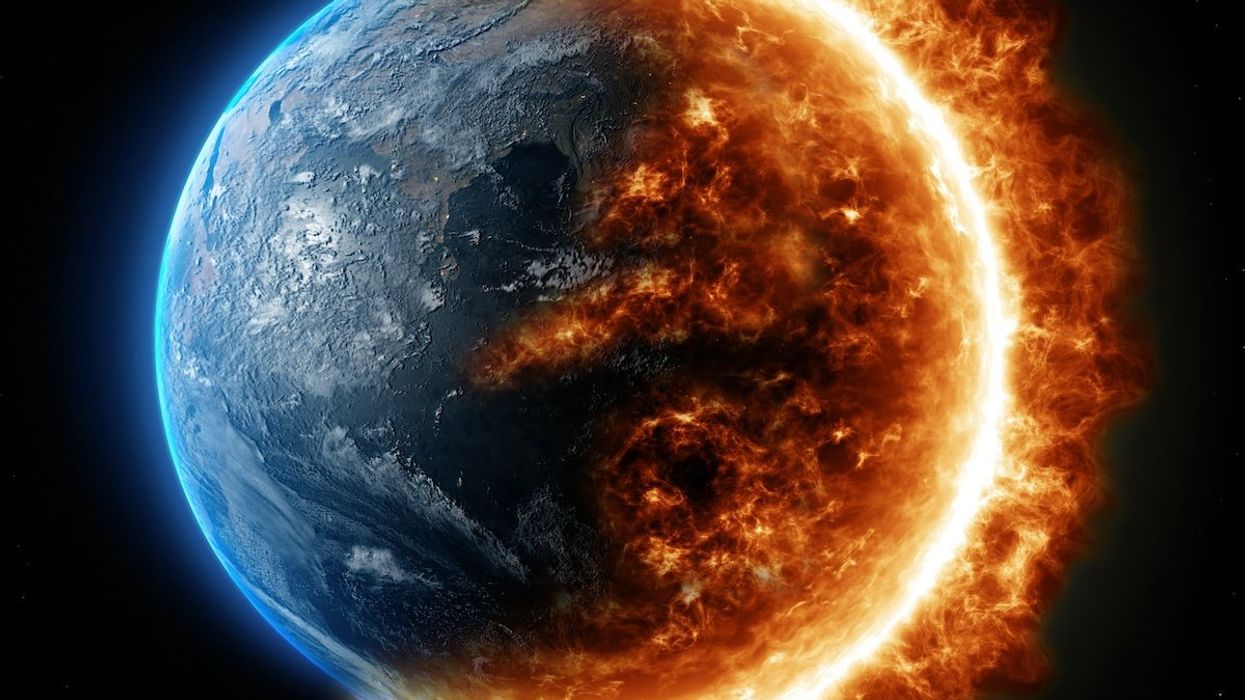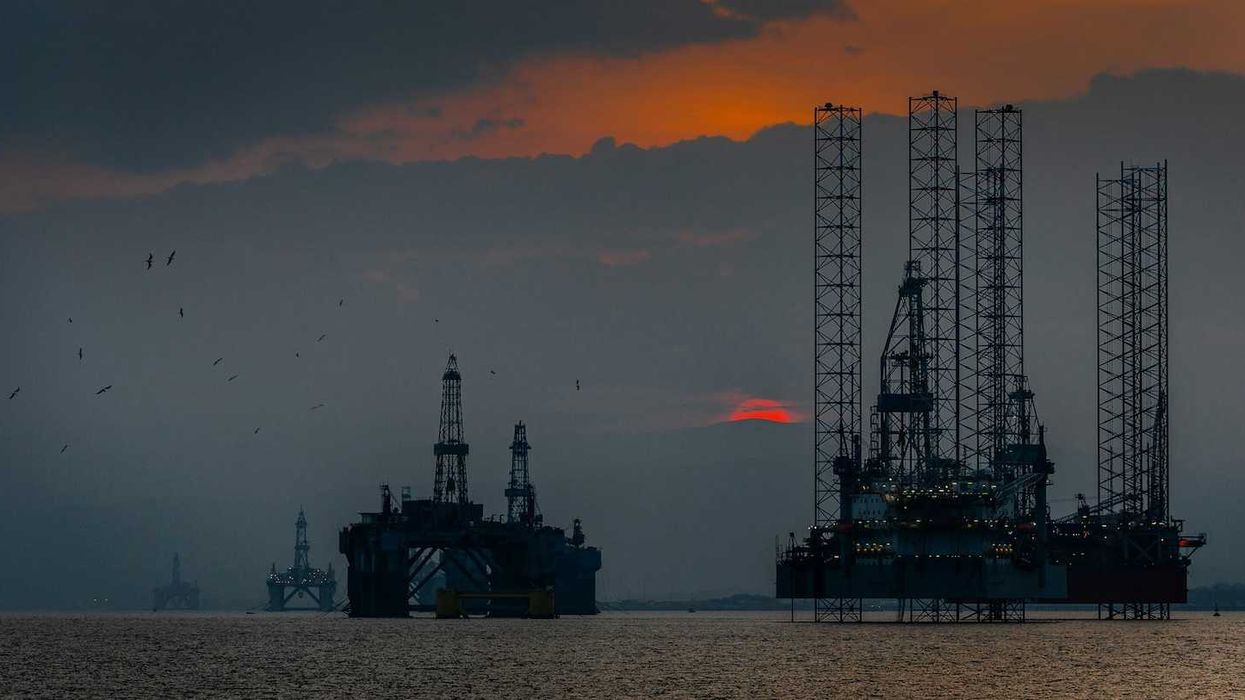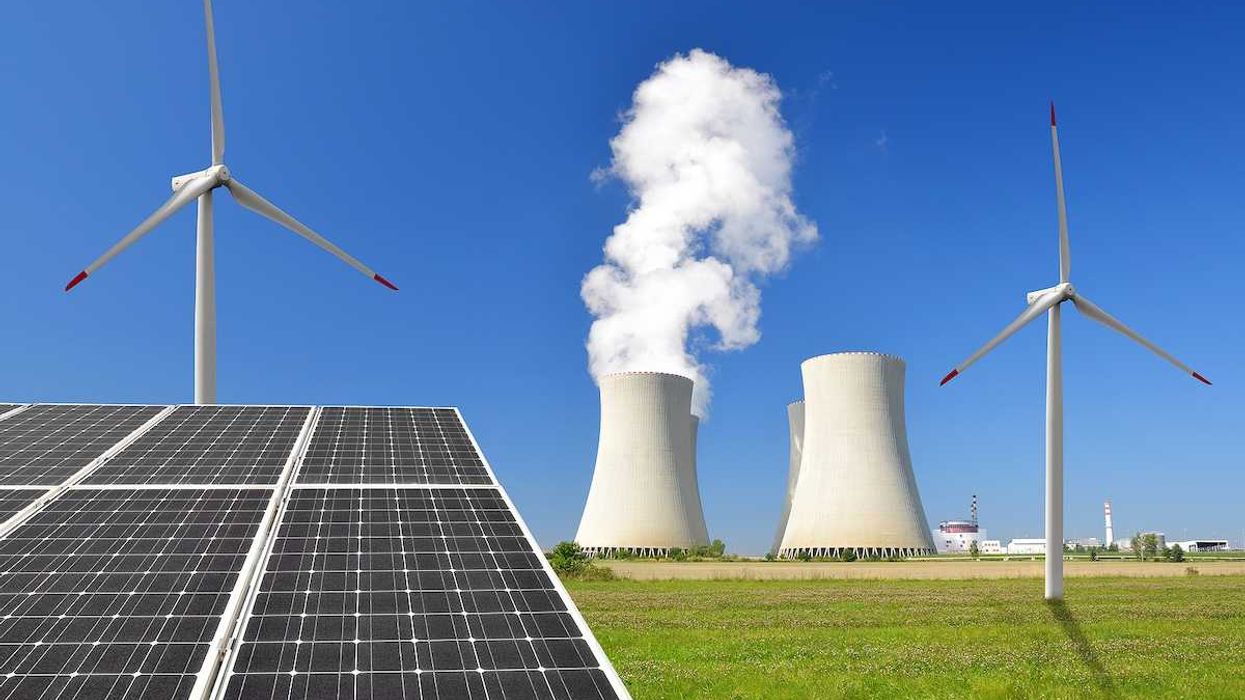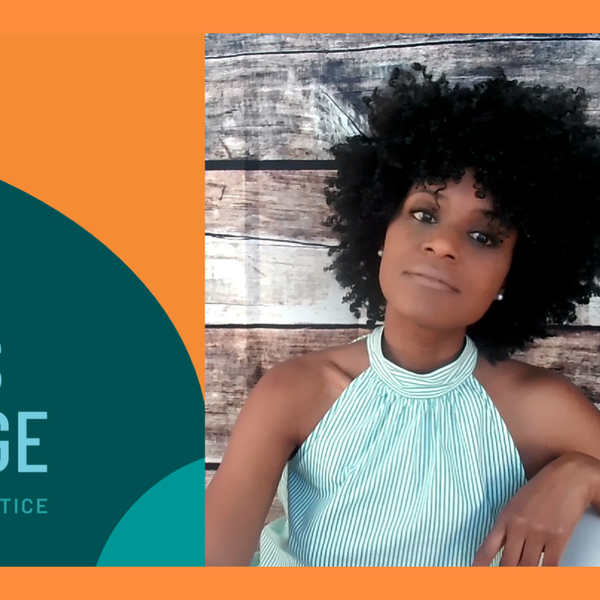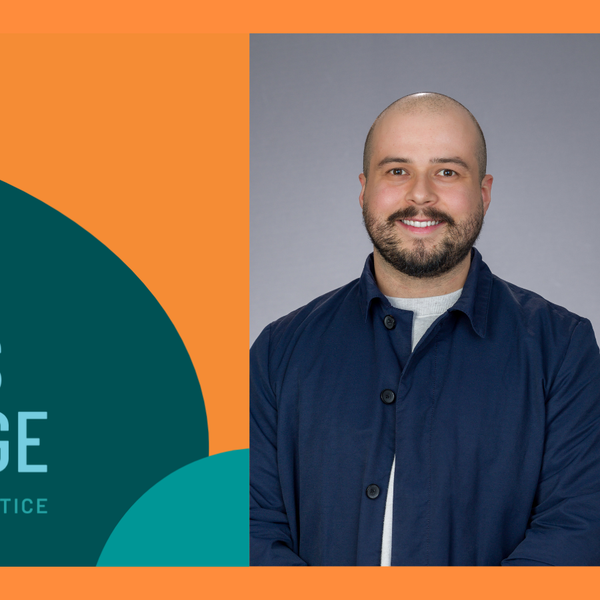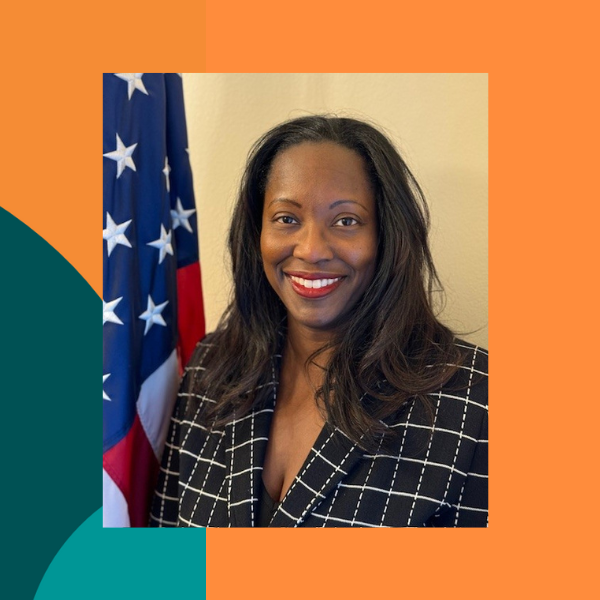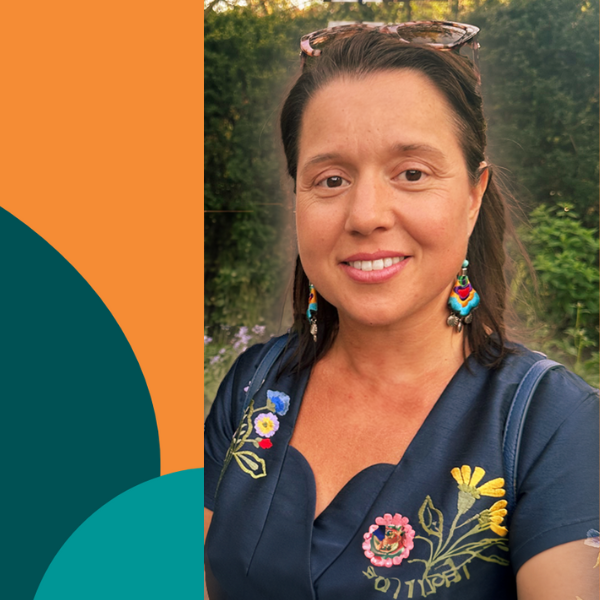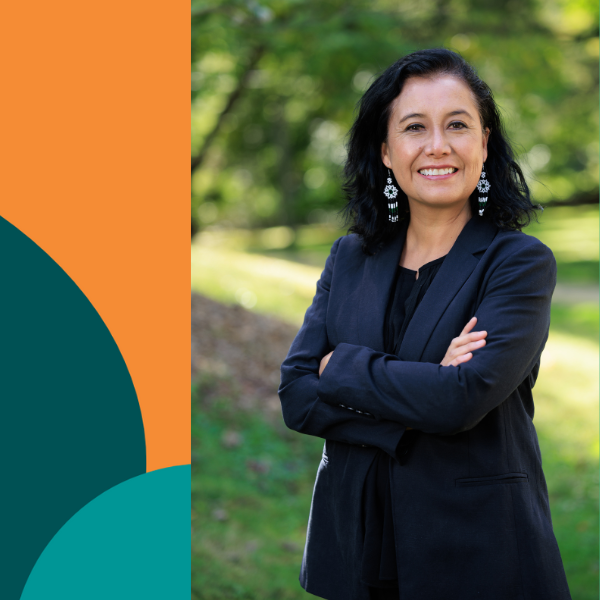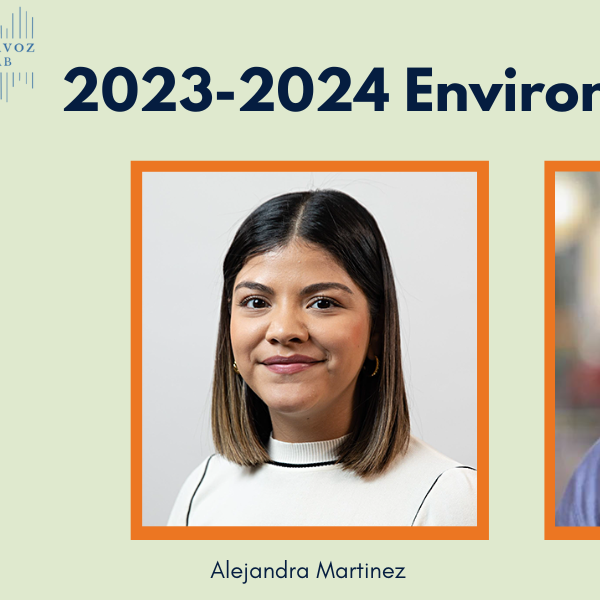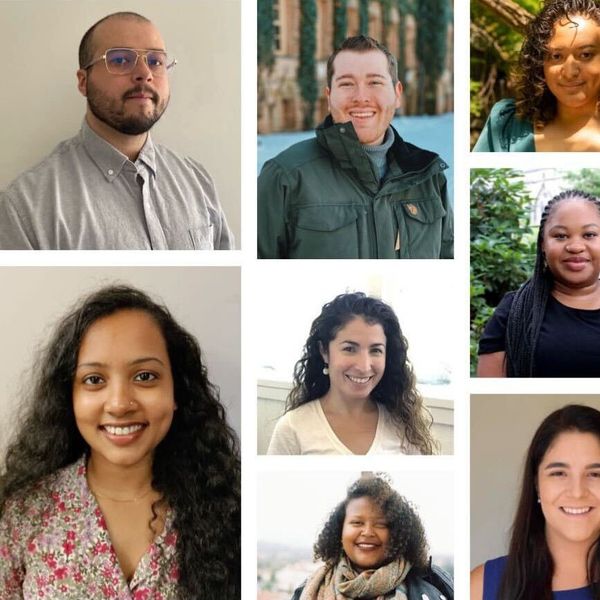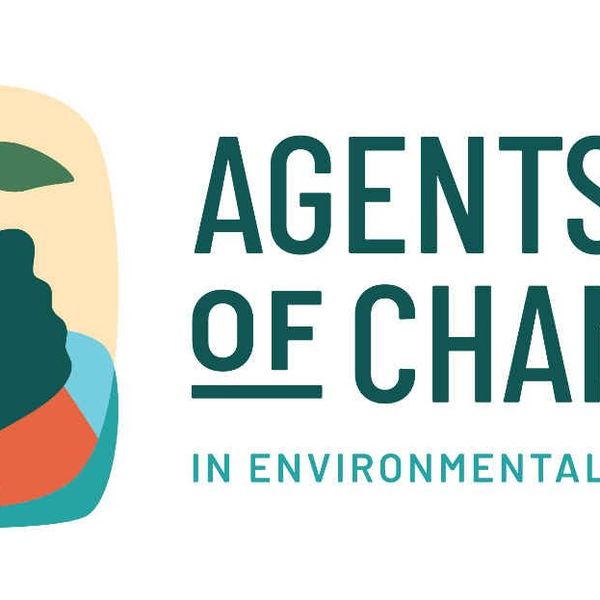Carolyn Ramírez joins the Agents of Change in Environmental Justice podcast to discuss the importance of old growth trees and the environmental justice implications of forest management.
Ramírez, a current fellow and staff scientist with the Natural Resources Defense Council, also talks about who has access to renewable energy and their relationship with hiking and nature.
The Agents of Change in Environmental Justice podcast is a biweekly podcast featuring the stories and big ideas from past and present fellows, as well as others in the field. You can see all of the past episodes here.
Listen below to our discussion with Ramírez, and subscribe to the podcast at iTunes, Spotify, or Stitcher.
Transcript
Brian Bienkowski
Carolyn, how are you today?
Carolyn Ramírez
I'm doing well. Thanks. How are you, Brian?
Brian Bienkowski
I'm doing wonderful. And where are you today?
Carolyn Ramírez
I am in Chicago, Illinois. Yeah, the ancestral homelands of the Potawatomi, the Ojibwe, the Odawa, the Ho-Chunk and the Menominee nations. And it is getting chilly. It is finally winter.
Brian Bienkowski
So what neighborhood are you in, in Chicago? If you don't mind me asking.
Carolyn Ramírez
I'm in North center. Yeah, the north side.
Brian Bienkowski
NoGreat. I used to live in Ukrainian village a long, long time ago and really, really loved it. I really loved being in Chicago. It's a great city. Well, excellent. Speaking of Chicago, there's a little horn for us a little little urban background.
Carolyn Ramírez
Yeah, that will happen. I apologize.
Brian Bienkowski
No worries. So speaking of cities and place, I usually like to start to hear about where people were from. So I know you split time between the Midwest, Southern US, but also spent some time in the Bronx in New York City. Can you tell me about how these disparate places shaped your upbringing and what that look like?
Carolyn Ramírez
Yeah, sure. Thank you for that question. So I'm originally from St. Louis, Missouri. I grew up there. Alright, my job is done with her treat. I'm sorry. The last time I gave her a peanut butter Kong, it took her an hour to finish it. So I really thought we had this figured out –anyway. So yeah, I grew up in St. Louis, Missouri until I was about 13. And then my family, we moved to Houston, Texas. But when I was growing up, living in St. Louis, every summer, we would split our time between North Texas and the Bronx in New York. Because my dad is from the Bronx, my mom is from Texas. And so those were just very different places that I went to every summer. It was a lot of fun. I associated very specific things with each place. I would say Texas felt more familiar because we just went to another suburb to visit my my mom's parents and my great grandparents. But when we were in New York that felt like such a different experience than what I grew up with. Because we would be in the Bronx. It was really loud. A lot of people like... I felt like I blended in more. I saw a lot of Puerto Ricans, never really saw any Puerto Ricans anywhere else that I that I went when I was growing up. And yeah, it was just... I saw a different side of my dad there, you know, his accent would come out, his New York accent. My mom always tells this story. I mean, I was in the car, so I remember it, but she just always tells the story of when someone was trying to double park in front of my, like our rental car, and my dad leaned out the window and he just goes "Yo yo yo, I'm trying to leave here." And like with a thick New York accent that I'm not going to try to impersonate and my mom just looks at him and goes "Yo yo yo?" it's just like, you can take the boy out of the city, but you can't take the city out of the boy kind of thing. And then, you know, the the nice person in the car that was and we got out of the spot and then the person took our spot and that was fine. But yeah, that was that was New York. It was very different experience. I got to, that was the one time a year I got to be around other Puerto Ricans because we'd see all my cousins, my grandparents. And you know, we'd eat food, we'd, we'd talk, we'd go to a Broadway show or something, we'd swim in a pool. It was just like, that was the experience that always felt really different from every other part of the year in my life.
Brian Bienkowski
So you, you ended up at Northwestern University for your PhD with some with some work in between, obviously, but tell me about your path there. And how did you decide on chemical engineering?
Carolyn Ramírez
Yeah, so when we moved to Texas, when I was in middle school, when I got to high school, I mean, I didn't really know what I wanted to do. I thought I always wanted to be a writer, because that's what both of my parents do. And then I took chemistry, and that things really clicked I had the best teacher I'd ever had in my life. I mean, we still keep in touch Amber's homesick shout out, she was just the best teacher I'd ever had. Let me be my, you know, loud, overexcited self about nerdy, nerdy subjects and chemistry just really clicked in my head. And I was like, this is very interesting. And I want to keep doing this forever. So, uh, but then I talked with her, I talked with my parents about that, because when I was thinking about what to apply for, for college, and everyone was suggesting chemical engineering, because it's a little easier to get a job as an engineer than a chemist, if you don't want to go to grad school. Lo and behold, I went to grad school anyway. But it just, it gave me more of a an application-based education on chemistry-based topics. So I was always kind of thinking bigger scale, even though most of my research has always been at the nanoscale. But I was, always had this idea of applications in my mind. And I think the fact that I studied chemical engineering instead of chemistry largely led to my environmental justice interests, because I was thinking about people a lot more in the context of my work.
Brian Bienkowski
Great. And I want to talk about that intersection between chemical engineering and environmental justice. But before we get to that, what is a moment or event that shaped your identity up to this point?
Carolyn Ramírez
That's a heavy question. There are many, I would say, I do think one that is going to happen is next year when my family and I finally go to Puerto Rico for the first time, I think that's going to be a very emotional experience for me. But I won't predict the future. I'll reflect on, I think, what we're kind of a series of moments in the year, we all want to forget, 2020. I don't choose to remember much of that year. But there are a series of conversations and, you know, a lot of introspection that I did during that time, where I really kind of figured out who I was, coming into... becoming more comfortable with my queerness, reckoning between my racial and ethnic identities as a white Puerto Rican person. And just having like a lot of really interesting and impactful conversations with a lot of people close to me. And I think a lot of that was caused by the environment of the world in 2020, everyone suddenly cared more about racial justice than they did the year before. And so we did a lot of that work in my department trying to get DEI and anti racism more intertwined in the work we were doing. So that obviously made me think a lot more about about my own identities. And I don't really feel like I've looked at myself the same way since then. So while it's not like one defining moment, even though obviously, we all wish we didn't have to go through the pandemic. It gave me more time than I ever wanted to, to think. And I think I finally figured some stuff out.
Brian Bienkowski
Well, thank you so much for sharing that. And I think that's true, regardless of what we came out as different people in whatever respect is it gave us all time to kind of, at least for me too, and I know my wife, just to think about how we live, what we're doing, how we're, what makes us happy, what doesn't make us happy. So I think that that time that we often don't have is a really big part of that. And of course, we don't want that time to be because people are getting ill, but I'm, I'm glad you had a somewhat positive experience come out of the pandemic.
Carolyn Ramírez
The rest of it wasn't but...
Brian Bienkowski
Of course, right. Look at the silver lining. So I'm looking back at the chemical engineering work as I said, I want to talk a little bit about.... I don't think this is a field that me personally I know a ton about. And it's not hasn't been too common on this podcast. So specifically when it comes to chemical engineering, can you talk about the environmental justice aspects, specifically maybe about, you know, technologies like solar cells, I know that was something that you worked on and who is able to access those types of sustainable technologies.
Carolyn Ramírez
Chemical engineers make stuff, right. So they make everything from the oil, the gasoline that goes in your car to the cosmetics that, you know, we use, to, I mean, the processed food that you're eating every day. So everything that chemical engineers do affects people. And all of those processes need to have that context. So I went into this field, kind of as a lifelong environmentalist wanting to do something, to work on the energy crisis, to work towards renewable energy sources. So I was really lucky to be able to study organic solar cells in grad school, I studied them at a very fundamental level, really taking the materials we were interested in and doing spectroscopy on them, which means shooting lasers at them and seeing what bounces off basically. That was really interesting. But at the end of the day, I was kind of like, "well, you know, who is this helping, and who's actually, if I make a breakthrough, if I find a material that is going to change the game, who's gonna have access to that material who's gonna have access to that technology?" So I started looking more into that. And, as is predictable in these sorts of scenarios, it's pretty much wealthy white people who have access to these technologies, and who use them. And I found this paper, I cited it in my policy,position paper, but I'm forgetting the name of the author. But this paper in Nature Sustainability that came out a few years ago, that found that even when you correct for wealth disparity among different racial classes, or homeownership, which as we know, because of the Federal Housing Administration is desperately more or disparately more homeownership with white people and a lot more people of color rent because of redlining. Even when you correct for all that, white people still buy into solar cells way more than Black people, than Latinos, than all other people of color. So I, you know, kind of wanted to understand why and what are the kind of compounding issues that that we need to tackle to, to get at that. And it's because in a capitalist society, like the United States, the way we solve a problem is just by making one thing to solve one problem and put it out into the world. But then the, you know, economic markets and the capitalistic way that the products are brought into the market, you can't undo all of the generational economic, and racial injustice that has happened here. So the same thing keeps happening and the same people get access to the technologies that really the opposite end of the spectrum should be getting, the environmental justice community should be getting, because they're the ones who are on the frontlines of the climate crisis. They're the ones who are dealing with extreme heat in the cities. They're the ones who are dealing with outside of the US in the in the Global South, they're the ones dealing with the dramatic effects of climate change, and also in the US, just natural disasters impact.
Brian Bienkowski
And you mentioned having a policy paper on this and you you you publish some research in both an academic journal and you actually, I had the chance to work with you on an op-ed for EHN, and that looked at this and these were ideas on how local and federal policy can center environmental justice to make access to renewable energy more equitable. So what were what were some of your solutions or ideas in this in this area?
Carolyn Ramírez
Last year, so in February, the Texas power grid failed. And as we spoke about, a lot of my family lives in Texas, a lot of people looked at that as like, "Oh, look at these southern people who don't know how to deal with the cold." But I don't think people understand how bad it was. The power grid failed. And people's house temperatures like inside their homes got down to like 27 degrees Fahrenheit. Hundreds of people died. And Texas has chosen to do nothing about that. They've chosen to not weatherize the grid to not do anything. I mean that and I'm able to look back on what I wrote about, you know, a year later because I think I published this last August. So you know, we had a little bit of optimism about how things might change But it's no not not with the state government the way it is, especially after the midterms. So that really got me thinking about both state and federal policies and how in order to, you know, get people access to solar cells and renewable energy. In order for that to be impactful, we have to fix a lot of other things first. So one of them being weatherizing our utility plants. So weatherizing the grid, preparing it for all kinds of natural disasters. So in a place like Texas, you think about hurricanes, wind damage, but also preparing for the cold. I mean, preparing for what, you know, the, the utility companies claim are unlikely catastrophes that wind up killing hundreds of people because we didn't prepare for it. So I've proposed a lot of this. President Biden made a commitment when he got into office to environmental justice communities, and pledging, you know, billions of dollars for this, this kind of innovation and policy. So a lot of, while I didn't do like a full financial breakdown in here, I do think there is funding within those promises within an administration like this, to improve weatherization of grids. And also, for anyone who doesn't know, Texas is the only state that has its own power grid. So the other two grids and the United States, there's two, you know, right down the middle, there's a West and East grid, and they're connected. But Texas is its own little island. And that's, that's a pretty big problem. And so the other solutions that I propose in this paper were built around individual home weatherization. So this is something that a few other of our fellows look into ideas of energy poverty. So energy poverty, and this definition, is when a family pays more than pays, you know, like, a large enough fraction of their income on utilities, because of how inefficient their home is. So that definition can range from like more than 10% of their income or, but in a lot of cases, it's a lot higher than that. So if you just change the source of the power, powering their home to solar, that doesn't solve their income problem that doesn't solve how inefficient their home is, that doesn't solve how, you know, maybe unsafe some of the building materials are, so we need to go in and fix those problems, too. And that's where part of that environmental justice funding needs to go. And then finally, I also proposed some environmental justice task forces that would be groups of of government officials, community workers, people who come together in states and tribal governments, like a tribal government could propose, apply for this kind of funding, where this would be funding directed for a specific community, more of like a grassroots element to implement renewable energy and weatherization solutions in their community. So these are just some ideas, you know, I thought of on my own. And so now that I'm actually working in science policy, I'm really excited to see how that kind of those kinds of solutions can can really materialize.
Brian Bienkowski
And you are working in science policy, but your career took a little bit of a turn. So you're now at the Natural Resources Defense Council working to understand and protect, mature and old growth forests, something very near and dear to me up here in the in the North Country. So can you outline what you're working on and the importance of these forests?
Carolyn Ramírez
Yes. So now I work at the Natural Resources Defense Council as a staff scientist, which has been pretty great. Going from working on more renewable energy, urban energy science policy to protecting public lands is very different. But the thread that connects it at the end of the day is climate change. And this work focuses on, we're focusing on protecting maternal growth forests, which you can define. Well, the federal government is actually trying to define what that means right now. They put out a comment period. So President Biden put out an executive order in April, on Earth Day, about how we need to start protecting mature old-growth forests. In order to do that, we need to define what they are, and we need to inventory them and we should protect them to some degree. It's, you know, as it was, it was really awesome executive order because it gave us a platform to finally you know, get the agency's attentions to tell them our ideas. So there was a federal comment period this summer, where and that's when like a federal agency will ask you, will just ask for public comment on either something they're proposing, or in this case, it was a little different, they just wanted to know, "So what's your idea for a definition of mature old-grown forest?" and that was through the USDA, which is where the Forest Service and BLM sit under. So we propose this idea that mature and old-growth trees, you can define them as kind of a combination of when that tree has sequestered, its like maximum amount of carbon at once. So it will continue, a tree will continue to sequester more and more carbon over its entire lifetime. But the rate of sequestration will peak. And we consider that to be a sign of maturity, as well as old-growth that mean, there are a lot of other biological components of maturity. But that's kind of a policy idea that is a little simpler, we found that a good mark for that was about 80 years, across national forests. This is not a blanket kind of rule that we're proposing here, we want to see, there would be a lot of specifications, a lot of wiggle room for being able to, you know, cut down a tree that was needed to in a dry forest in the West, for example. So it's by no means a blanket rule, but it's a good baseline to build from, because it would protect a lot of a lot of the carbon stores that currently are cut down. Because I think something that I failed to explain at the beginning here is that, so federal lands are all managed differently by different organizations. So like the National Park Service, that's what everyone thinks of when they think of public lands, you think of going to a beautiful national park, and how well preserved it is. National Forest, while you should also go there and recreate there, they're a little, they're managed a little differently. And most of them are logged. So they're a lot of the wood in National Forest is cut down and sold in order to fund the Forest Service's work or you know, what have you, but they recently got a lot of money from the IRA. And so hopefully, we can have a little bit more pull here with limiting the logging and increasing the protections because if we cut down fewer of these trees, which are mature and old growth trees, they have been undergoing biological evolution, you know, for millennia, they're a little bit ahead of us on how to manage ecological problems. So they know how to protect themselves. So if we can protect more of those old trees, that's a really easy way to preserve some carbon stores.
Brian Bienkowski
And Pardon my ignorance. But if you have a, say you have a tree that is has reached its rate of carbon storage, and we cut that down, is that carbon just immediately released? Or is it released when it is burned or cut? Or how does that work?
Carolyn Ramírez
When a tree is cut down, not all that carbon immediately evaporates in the atmosphere, you lose a little bit of it during the harvesting process. But typically, in our estimates, and like a lot of the literature that you can find out there, maybe about 30% of the carbon in in a tree like that is going to be preserved in a long term wood product like something made of wood, like the chair I'm sitting on right now. But a lot of it is lost throughout that process, because a lot of it is going to be waste from cutting down the trees, a lot of it is going to be turned into woodchips, or in a lot of timber mills also use parts of those logs as biofuels and biomass. So that's immediately emitted into the atmosphere. So there are a lot of different components of where this comes off. And typically, if we're thinking about a typical long-term wood product is going to be about 30% of the carbon that's preserved. So versus if we left the tree there. There's also a conversation around if you needed to cut the tree down because it was contributing to some sort of outbreak of a disease or bug. You could cut it down and leave it in the forest. Then you're cutting it down you're leaving all that carbon in the forest you're not losing any of that carbon
Brian Bienkowski
where I am we I grew up downstate in Michigan and now I live on the edge of a boreal forest almost. We're pretty close and I have fallen in love with many species including Tamarix and Cedars especially they just an even balsams I'd like to pinching the leaves and it's almost citrusy. So I am I'm a big tree guy. I was wondering if there's a tree that has spoken to you if there's a certain tree or species that you just find beautiful, delightful for whatever reason?
Carolyn Ramírez
the most recent local trip, I was up in northern Wisconsin, so not quite up in the boreal, but I, I really love some of the conifers that are up there. And the Eastern Hemlock is one of my favorites, it's very easy to pick out. And as well as Sugar pines, Sugar pines are really cool, because they have these humongous pine cones, like bigger than your head. And so that's just that's really cool to see, too. I would say those are probably a few of my favorite that I've seen recently.
Brian Bienkowski
We've lost a lot of Hemlock here. And there's I have in my head mapped out, we live pretty close to the Hiawatha National Forest. And I know where they're at. So I have special places where I go to see the hemlock. So I'm glad, I'm glad when that one speaks to you. And speaking of some of these visits, I know you've gotten to visit some pretty cool areas. Maybe this is Wisconsin or California or maybe somewhere else. But what are what's what's a place are a couple places that have been memorable so far when you've gotten out and seeing the forest.
Carolyn Ramírez
Yeah, I would say the two most notable to me... So when I was up in northern Wisconsin, we also briefly went up into the Upper Peninsula. So I saw the Chequamegon-Nicolet national forests, which is in northern Wisconsin, and then we briefly sojourn over to the Ottawa, in the Upper Peninsula, and we went to the Sylvania wilderness, which I don't know if you've been there, but it's incredible. It's one of the, it's one of the only like Virgin old growth forest in the eastern side, because the eastern part of the United States was logged so quickly, when, when white settlers took over and just colonize everything, they just cut down, like all of the wood. So a lot of the mature and old-growth that we're talking about when we're looking on the east side of the country, a lot of that's going to be you know, less than 100 years old. But there are some patches like this that are hundreds of years old. And it was just such a beautiful forest. I'm deeply enchanted by these organisms called lichen. Which, for people who aren't aware, it's this kind of like, codependence between an algae and a fungus. And they're just beautiful. And they take so many different forms and diverse lichen are a really strong sign of old-growth forests. And in a wet place, like the Upper Peninsula, there are tons of them. And so we just saw a lot of, you know, down old logs that are amazing habitats for all kinds of species, from pine marten to other kinds of rodents. And seeing the beautiful lichen all over those trees is just so different than anything I'd seen before.
Brian Bienkowski
Well, I'm really happy to hear that the Upper Peninsula spoke to you because it can be an unforgiving bog to a lot of people, especially in the middle, I don't know when you were there, but in the middle of summer, the bugs will just carry you away, but I find a lot of beauty in it. And I'm glad. I'm glad you did, too. Was hiking and being in the forest kind of part of your life before this job, or is it something new to you?
Carolyn Ramírez
It was, but it's definitely more a part of my life now. You know, we're in part of this fellowship, we're writing these essays that we've been working on. And I talk a lot about how hiking and being in public lands, like I associated that a lot more with whiteness than anything else. And so I, you know, I grew up hiking, but it wasn't like a huge, super fun thing. I also lived in a relatively flat part of the country. So we didn't do a ton of hiking. But as I grew up and became an adult, that became more interesting to me, because I was interested in exploring nature. And then, you know, the last, you know, kind of in college and grad school is really when I started doing that a lot more with friends.
Brian Bienkowski
Looking at this juxtaposition between your career I think just as people we often think of environmental racism or injustice, as being an industry in cities, at least that's how it's often portrayed in the media. So what are some of the environmental injustice implications when it comes to forest protection?
Carolyn Ramírez
Yeah, that's a great question. It's definitely something I had to think a little bit harder about when I started this job because they're less obvious. I mean, one thing we talked a lot about when I was interviewing for this position was how important indigenous coalition building is with with this work, because, I mean, everywhere we are, we are on the ancestral homelands of indigenous people. And so these forests specifically –So when I was up in Wisconsin, I had the really awesome opportunity to go to the Menominee reservation, and meet with some of their timber company and their land manager and like just a really amazing group of people who have a completely different perspective on forest management than what I'm used to encountering. And one image that they showed me was that if you looked at a GIS map of like the state of Wisconsin, and you don't draw a border around the reservation, if you're just looking at like canopy closure, tree closure, you can see the outline of the reservation because of how much better preserved their forest is. So they just, it's yeah, it's co-management with indigenous people is such a key part to better preserving our forests from because of the perspective that well, those were their lands to begin with. And then we as settlers took those from them. So there's a lot of rectification that needs to happen there. And co-management is a big element of that environmental justice aspect. As well, as, you know, indigenous people having access to those lands for cultural reasons, a lot of times, that's that's not a given. And that's a lot, then into these treaties that you know, gave reservations, or that created reservations are very important to consider. But a lot of times those treaty rights aren't always respected and in terms of cultural access to ancestral homelands. But in addition to that, when I talked about I mentioned positionality, in terms of access to public lands, the reason why it's, it's, you know, public lands are seen as this rich white place to go and be with nature, is because that would be the group of people that's going to feel safest out there.
Brian Bienkowski
Well, before we wrap up, I have three rapid-fire questions. And then one final question. And you can just answer with a phrase or a word on these, it is just something fun. And we already know your favorite tree. So we will not answer ask that one. So the first one is, what is your favorite animal?
Carolyn Ramírez
A penguin
Brian Bienkowski
What is the best gift you've ever received?
Carolyn Ramírez
Probably when my parents told my brother and me that we're going to go to Puerto Rico. It was supposed to happen in 2020 actually, obviously didn't. So
Brian Bienkowski
if you could have dinner with one person, it would be
Carolyn Ramírez
Right now –I think this answer changes a lot– But right now, I think I would want to have dinner with Brittney Griner in the United States, because that would mean that they were not wrongfully detained in Russia anymore. I look up to them a lot as an incredible basketball player, athlete and activist and I think about them a lot not not being here.
Brian Bienkowski
A quick programming note shortly after we recorded this podcast, Brittney Griner was released in a prisoner swap with Russia. And what is the last book that you read for fun?
Carolyn Ramírez
So I read this book called "The Inheritance of Arcadia Divina" by Zoraida Cordoba. And it's this novel that's about kind of this through bruja, witchy power this family has and it's just a lot about nothing needed and also kind of like a fantasy book. So it was it was a really really fantastic but what about you what was the last book you read?
Brian Bienkowski
last book I read so I am reading right now a book called "Eager" it is by Ben Goldfarb. It is about beavers. About these it's called eager Yeah, it's not eager beavers but it is just called the eager and it is it is just a great book. I live around. I live on a river so I have a beaver dam across the pond. I am a brook trout fisherman and a deer hunter. So Beaver Dam areas have always been something that I seek out and are very important to me. And they're just a fascinating rodent. They are, they reshape ecosystems and landscapes in ways that Ben Goldfarb argues could save the western US and the water issues that they're having out there. So I'm I'm reading that right now. Well, Carolyn, this has been excellent to talk to you. I'm so happy that I have gotten to know you. Beyond just writing an op-ed for EHN and your work, your attitude, your thoughts are just something I really admire. So thank you so much for doing this and being part of this program.
Carolyn Ramírez
Thank you so much for having me, Brian.
Brian Bienkowski
That's all for this week, folks. I hope you enjoyed my conversation with Carolyn. If you enjoy this podcast visit agent ofchangeinej.org. And while you're there, click the donate button to support us. You can also find us on Twitter and Instagram and please follow us on Spotify, iTunes or Stitcher wherever you get your podcast.
- LISTEN: Jennifer Roberts on nature as medicine ›
- LISTEN: Ashley James on protecting children from environmental exposures ›
- LISTEN: Annie Belcourt on Indigenous health and healing ›
- LISTEN: Carlos Rodriguez-Diaz on infectious diseases and social justice ›
- Public lands are not neutral. We must grapple with their racist roots - EHN ›
- Los parques naturales no son neutrales. Debemos enfrentarnos a sus raíces racistas - EHN ›
- JoRee LaFrance on water research and advocacy for the Crow Tribe - EHN ›
- LISTEN: Kevin Patterson on Indigenous communities’ heavy metal exposure - EHN ›
- LISTEN: Fellows discuss some must-read environmental justice books - EHN ›

